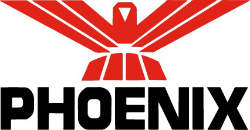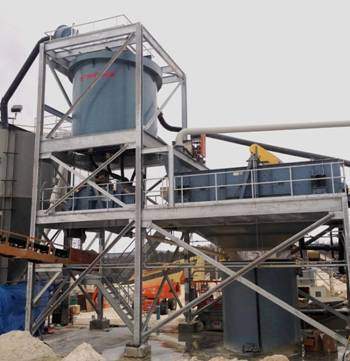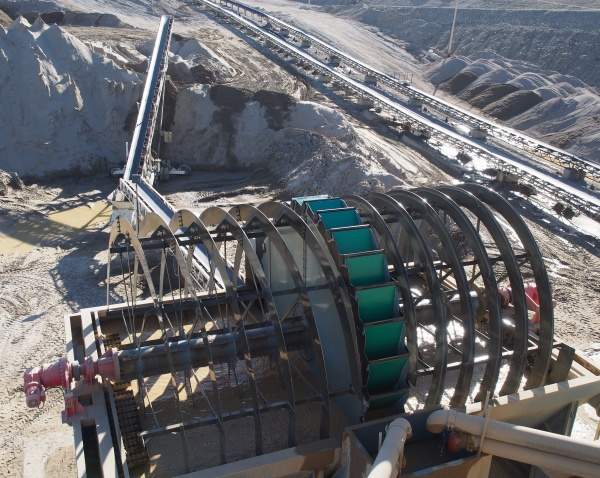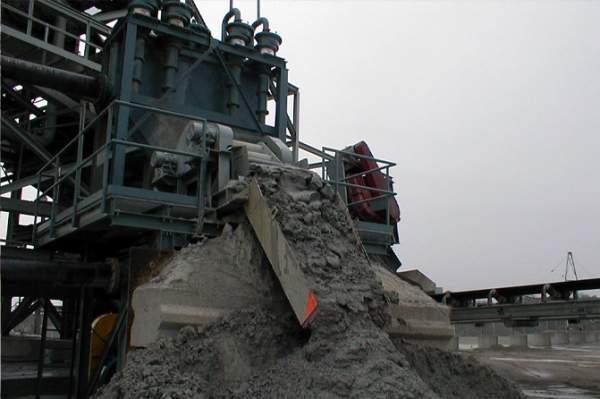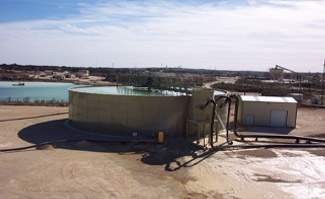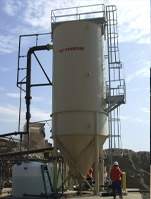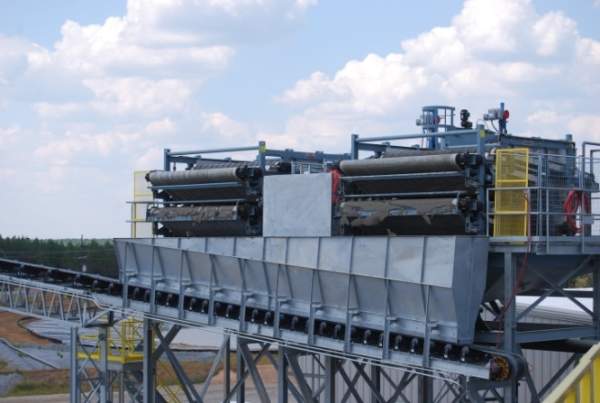Producers of construction aggregates, industrial sand, frac sand, and minerals are confronted with a changing business environment relating to materials specifications, production costs, the availabilities of reserves and water, and environmental regulations.
Process technologies and engineering
PHOENIX Process Equipment Co. offers a broad base of process technologies for construction materials, frac sand and industrial minerals production and coal tailings dewatering applications. Along with the equipment itself, PHOENIX provides the lab testing, application experience, and process engineering that delivers a total engineered system to the end user.
High-quality spec sand
The PHOENIX Model HS HYDROSORT™ provides sharp size classification, density sorting, and washing/rinsing of granular solids. Precise overflow slurry density tracking and the controlled, flexible addition of upward current water provide easy operational adjustment of the HYDROSORT™. The cut size can be varied over a broad size range while density separating lighter weight contaminants (e.g. lignite, shell grit) from sand, or silica sand from heavy minerals (e.g. garnet, Ti/Zr minerals).
The HYDROSORT™ produces high-quality, spec sand from variable quality raw material, using a fluidized bed of slurry to classify materials by particle size or density. PHOENIX’s advances in tank design, control instrumentation and sand discharge valves provide superior performance characteristics – a sharper cut, avoidance of channeling behavior, and the ability to operate with ~0%-100% mass-yield to the underflow product stream. Typically, mineral slurry is fed into the top of the unit by a hydrocyclone or slurry pump. The feed material encounters a fluid bed formed by particles near the actual separation cut size. The coarse (or heavier) spec product is discharged through automatically controlled valves at the bottom of the unit. Lighter (or finer) particles resist joining the fluidized bed and accumulate at the top of the tank, where they discharge to the overflow launder.
PHOENIX / KISA Bucket Wheel for sand dewatering
Many PHOENIX / KISA Bucket Wheel designs are available, with the wheel diameter and bucket width determining the solids handling capacity and the surface area of the slurry bath defining the hydraulic capacity.
These machines are uniquely designed for solids recoveries of 99%+ with very low power requirements, even from dilute slurries such as dredger spoil. Dewatered solids are readily conveyable and stackable, having residual moistures that are considerably lower than from dewatering screws.
Hydraulic capacities up to 17,500 gpm, and solids throughputs up to 1,760 stph are achievable on a single machine. Residual moistures in the range of 12%-18% can be achieved, depending on particle size. Abrasion resistance is excellent, and the connected power requirement is extremely low.
The wheel is equipped with multiple buckets. Slotted elastomer sieve mats are bolted into the bucket bottoms and provide consistent drainage surface area. To further increase the dewatering effect, siphon pipes are mounted beneath the buckets, withdrawing water from the sand "cake" as the bucket lifts from the slurry bath. PHOENIX offers on site field demonstrations for its technologies. PHOENIX is the exclusive North American technology partner for KISA GmbH.
Fines separation and dewatering
PHOENIX performs lab tests on effluent slurry samples to establish the percentage of coarser reject material (typically, -75µ x 38µ). This helps to determine if it can be economically practical to mechanically dewater and recover this fraction.
PHOENIX Model HG hydrocyclones and dewatering screens perform this -75µ x 38µ separation without using polymers, reducing the volume of ultrafines in the hydrocyclone overflow. The -38 micron ultrafines must still be disposed of with sedimentation or through thickening and pressure filtration.
PHOENIX thickening technologies
PHOENIX uses thickening technology to reduce the hydraulic flow rate to a slurry pond or to optimize pressure filtration performance. Model AF AltaFlo™ and Model HF Hi-Flo™ Thickeners use sedimentation technology to maximize the water recovery rate, provide clarified water for recycling, and reduce the underflow slurry flow rate while thickening the slurry from 5%-10% solids to 40%-45%. The resultant volume reduction factor can be as much as 8 to 10.
Optimal pressure filtration performance
Pressure filtration/dewatering converts thickener underflows from a fluid state at 40%-45% solids to a handleable solid cake. Filtrate water from this process is pumped to the thickener, where the water is clarified and then recycled to the processing plant. The dewatered ‘cake solids’ are then available for disposal, sale, and use in post dewatering applications. For this step PHOENIX applies either its rugged belt filter presses or recessed chamber filter presses, depending on the site specific requirements.
As a result of applying PHOENIX mechanical separation, thickening, and dewatering technologies:
- Marketable fines are economically separated, dewatered, and made available for sale using PHOENIX Model HG Separators
- Clarified, high quality sand plant effluent water is immediately recycled to the processing plant for reuse with minimum evaporative losses, as overflow from PHOENIX Model AF or HF Thickeners
- Ultra fine rejects are thickened and dewatered to a handleable, solid phase state (slimes dewatering) on PHOENIX Belt Filter Presses or PHOENIX/F&B Recessed Chamber Filter Presses

